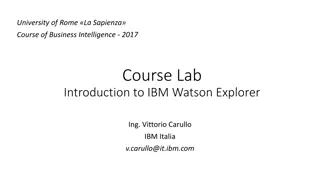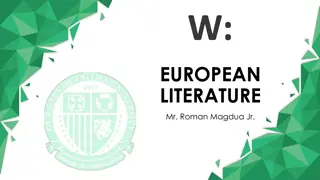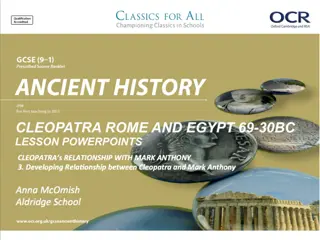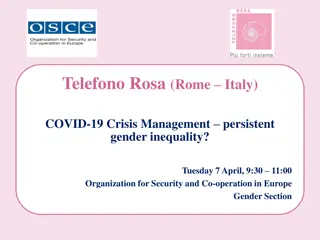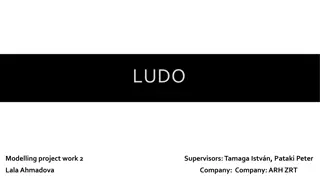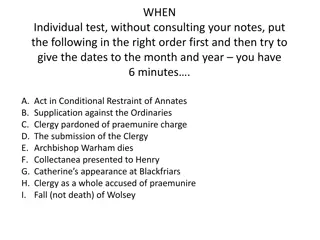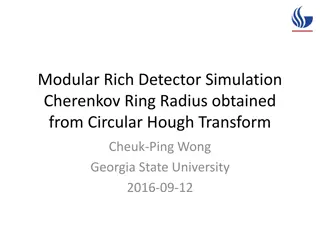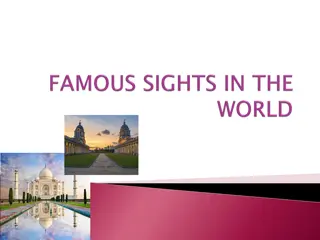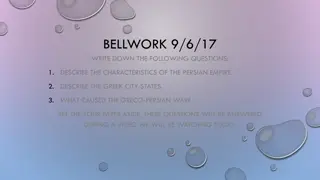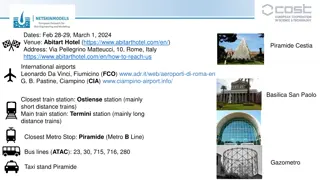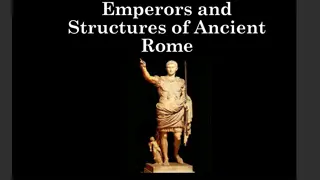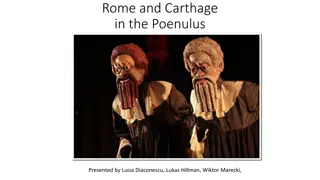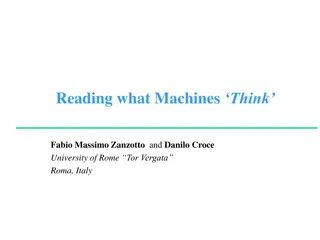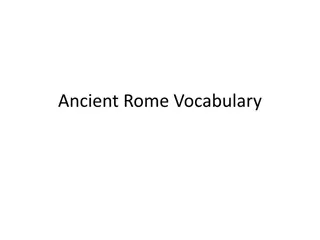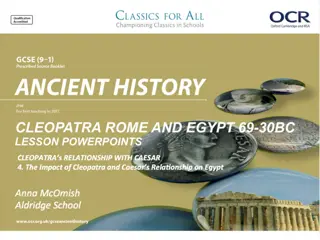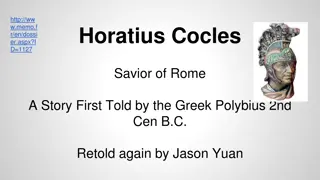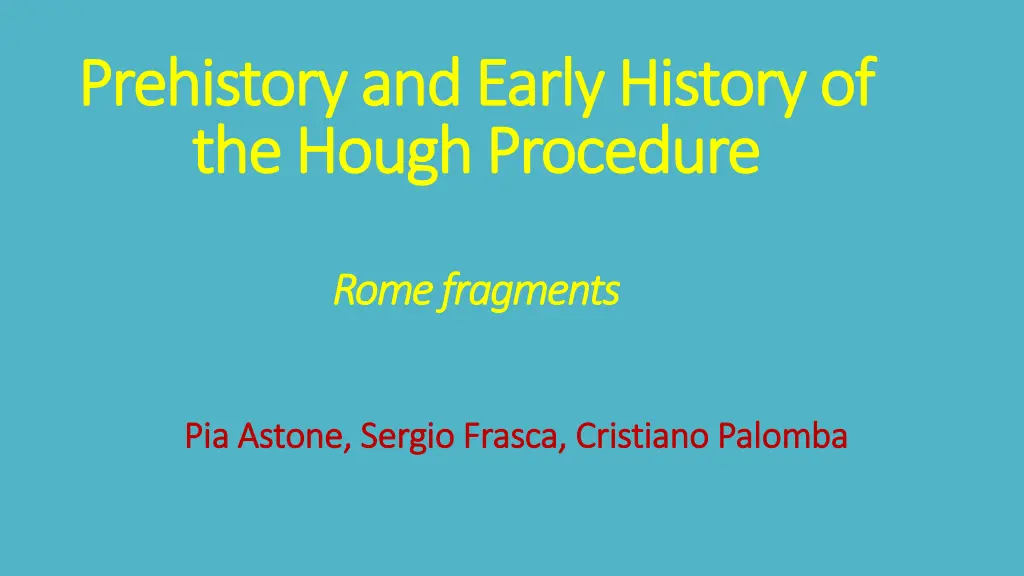
Early History and Search for Periodic Sources - Rome Fragments
Discover the early history and procedures in Rome as well as the search for periodic sources through gravitational-wave antennas. Learn about the GEOGRAV antenna, Explorer and Nautilus resonant detectors, and the Virgo search for periodic sources using innovative algorithms.
Download Presentation

Please find below an Image/Link to download the presentation.
The content on the website is provided AS IS for your information and personal use only. It may not be sold, licensed, or shared on other websites without obtaining consent from the author. If you encounter any issues during the download, it is possible that the publisher has removed the file from their server.
You are allowed to download the files provided on this website for personal or commercial use, subject to the condition that they are used lawfully. All files are the property of their respective owners.
The content on the website is provided AS IS for your information and personal use only. It may not be sold, licensed, or shared on other websites without obtaining consent from the author.
E N D
Presentation Transcript
Prehistory Prehistoryand the the Hough and Early EarlyHistory of History of HoughProcedure Procedure Rome Rome fragments fragments Pia Astone, Sergio Frasca, Cristiano Palomba Pia Astone, Sergio Frasca, Cristiano Palomba
Early searches for periodic sources Early searches for periodic sources 1991 - Frasca-La Posta Search for monochromatic sources with the GEOGRAV gravitational-wave antenna (Il Nuovo Cimento 14C 1991, p.235-250): GEOGRAV was a room temperature resonant bar gravitational antenna used to check the seismic, electromagnetic and gravimetric disturbances on the gravitational signal. We used 4 years of almost continuous data to search for periodic gravitational signals, in the band 856~859.3 Hz. We found an upper limit of about 3*10-22. 1996 Search of Monochromaticgravitational waves using resonant detectors P. Astone, S.Frasca, G.V.Pallottino, G.Pizzella: Presentation of an algorithm for the search of periodic sources by the Explorer and Nautilus resonant low temperature gravitational antennas.
Geogravantenna data The The gravitational gravitational data lock lock- -in in at at the the longitudinal bar, giving a 1 bar, giving a 1- -Hz Because Because the the change changeof the temperature, there therewas was a a change change in the frequency, in the frequency, that was was computed computedin in real real time. data were were taken longitudinal resonance Hz complex complexsequence of the temperature, takenafter a after a resonance of the sequence. . of the that time.
Starting Startingthe Virgo the Virgo search searchfor for periodic periodicsources sources July July 1997 tasked with coordinating the search for periodic sources. 1997 : at a Virgo meeting in Paris, the Rome group was September September 1997 was to use techniques for calculating bubble chamber tracks and apply them to the peakmaps. By not considering the amplitudes, we avoided giving too much 'weight' to the noise and could use very efficient algorithms. Zanello proposed two algorithms to us: the Hough transform and an algorithm similar to what is currently known as the Viterbi algorithm. After careful analysis, we opted for the Hough transform, which was partly similar to the Radon transform (roughly the so-called 'stack-slide' method). 1997: Pia and Sergio went to Prof. Zanello. The idea Prof. Lucia Prof. Lucia Sorrentino Zanello Sorrentino Zanello
Bubble Bubblechamber chamber track track
Time Time- -frequency frequency peak peakmap mapand and spectrogram spectrogram Time
Why WhyHough Hough To use hierarchical method of search, the stack-slide method was proposed. It was in practice a form of the Radon transform. The problem with this method was its sensitivity to spectral disturbances and its high computational cost. Hough transform considered only the presence of peaks over a given threshold, without taking into account the spectral amplitude (that is bigger in case of disturbances) So, Hough transform has less numbers to crunch and uses bits instead of real numbers, giving gain in computing time of more than one order of magnitude. The robustness against spectral noise is due to the absence of the bigness of the disturbance peaks. We later demonstrated that in ideal cases (absence of spectral disturbances), Radon was better. Later on, we developed a method that managed to achieve Radon's efficiency with a small computational overload (the Radon after Hough method).
Rome and Potsdam agreement Rome and Potsdam agreement In the summer of 1997 Pia went to Potsdam to visit Maria Alessandra. Then we initiated our collaboration. The first meeting was in Paris, at the GWDAW (November 1997), were we presented some ideas on the periodic source search (Papa, Astone, Frasca, Schutz Searching for continuous waves by line identification . Many other meetings and discussions followed. The first public presentation of the Hough method was in Pasadena, at the Second International LISA Symposium, in July 1998. In 1999 we organized a few days seminar at the Computer Center of the Sapienza University. The people who participated were Pia, Cristiano, Sergio, Maria Alessandra, Alicia and Federico Massaioli, an expert of High Performance Computing. Cristiano, Federico and Alicia met in Potsdam to work on the algorithm.
Developments Developments The original Hough transform was developed between the time-frequency space and the ecliptic longitude and latitude space. Two different techniques were developed: in Rome, the Hough space was the entire sky, while in Potsdam, the sky was divided into patches (which allowed for longer coherent pieces). Then we introduced some improvements, like the Adaptive Hough and the Radon after Hough , There was a problem using the sky Hough (especially the full sky Hough): the distortion of the Hough space that was used, created clusters of false candidate signals. To solve the problem, the group in Rome changed the Hough space by using the frequency-spindown space, introducing the so- called frequency Hough . frequency Hough . This resolved the issue.
References Frasca-La Posta Search for monochromatic sources with the GEOGRAV gravitational-wave antenna (Il Nuovo Cimento 14C 1991, p.235-250 Search of Monochromatic gravitational waves using resonant detectors P. Astone, S.Frasca, G.V.Pallottino, G.Pizzella in Proceedings of the 12 th Italian Conference on General Relativity and Gravitational Physics, Rome, September 1996 Papa, Astone, Frasca, Schutz Searching for continuous waves by line identification . In Proceedings of the Second Workshop on Gravitational Waves Data Analysis, November 1997 Cristiano Palomba, Pia Astone and Sergio Frasca, Adaptive Hough transform for the search of periodic sources Class. Quantum Grav. 22 (2005) S1255 S1264 For the use of stereographic projection, the idea came from For the use of stereographic projection, the idea came from S.Frasca Rough Localization of Gravitational Rough Localization of Gravitational- -Wave Sources , Il Nuovo 1980, were this projection 1980, were this projection was was used used for the S.Frasca Analogical Device for a Analogical Device for a Cimento VOL. 3 C, N. 3, May VOL. 3 C, N. 3, May- -June Wave Sources , Il Nuovo Cimento for the astrolabe astrolabe June
The The gravitational gravitationalAstrolabe Astrolabe


